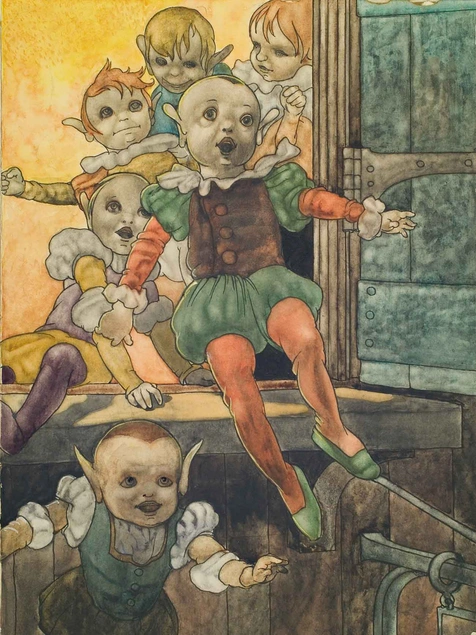Child's Play
In the 19th century, with the work of Brothers Grimm, Hans Christian Andersen, Lewis Carroll, and others, children's fairy tales and nursery rhymes began to be widely published, documenting what was originally a rich oral tradition across western cultures.



